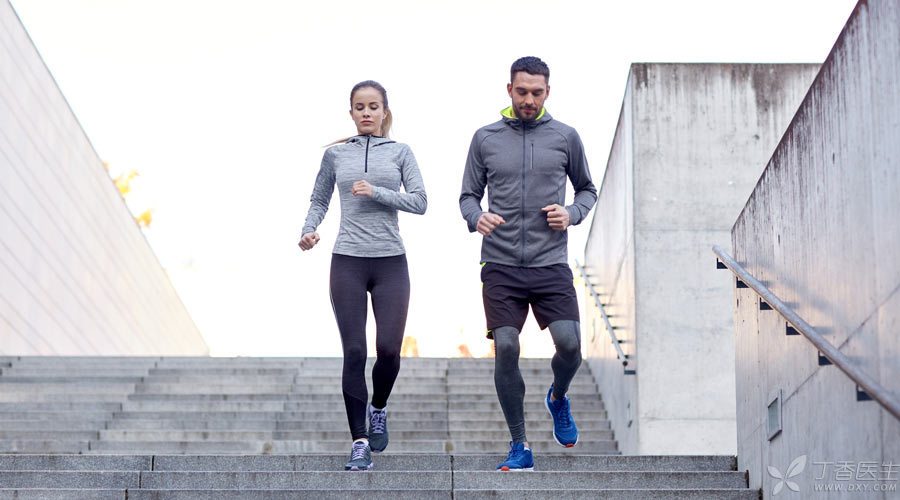
There are always 10,000 reasons why you don’t want to go out for sports.
It’s raining outside, forget it. The smog is too serious, forget it. If you are in a bad mood on a cloudy day, forget it. In short, it’s not that you don’t want to exercise, it’s really that objective conditions don’t allow…
It doesn’t matter, Dr. Clove has helped you figure it out.
Stairs (steps) can be seen everywhere in life: stations, overpasses, office buildings, residential areas, etc. If you take these stairs seriously, you must have enough exercise. As long as there are stairs (or steps), you can exercise at any time.
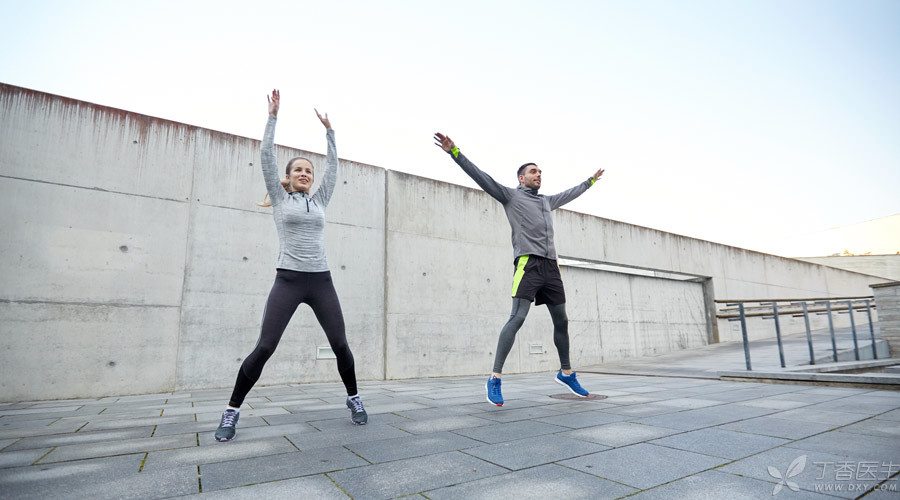
You can warm up first by two or three minutes of [opening and closing jump] or high leg lifts, or skipping rope. Then start with a few simple movements that can be learned on a 0 basis [staircase fitness method].
Most movements are done 10 ~ 20 times in one group, and 3 ~ 5 groups can be done.
Action 1: Bend and stretch your arms
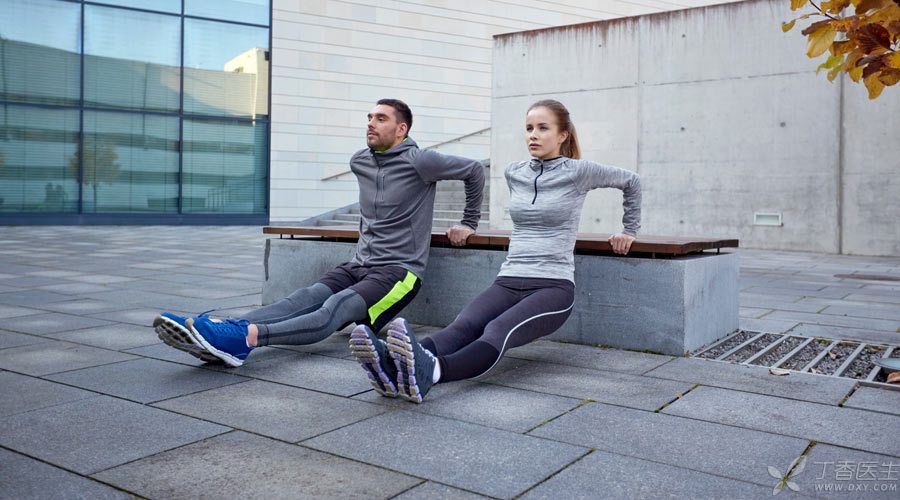
This action is simple and convenient. You only need to use the positive staircase steps as the fulcrum to continuously stimulate the triceps brachii of your arms on both sides. You can choose to straighten your legs (as shown above) or reduce the difficulty:
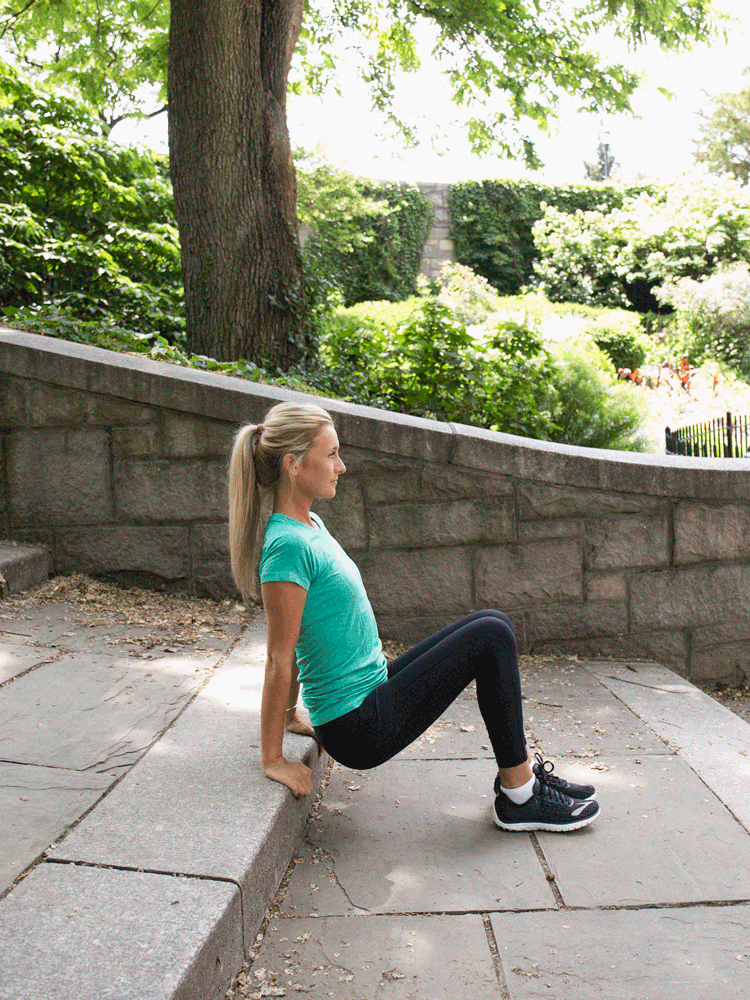
You can also try to improve the difficulty:
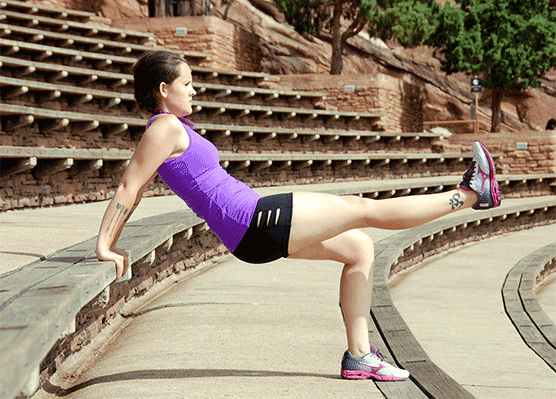
Action 2: Squat
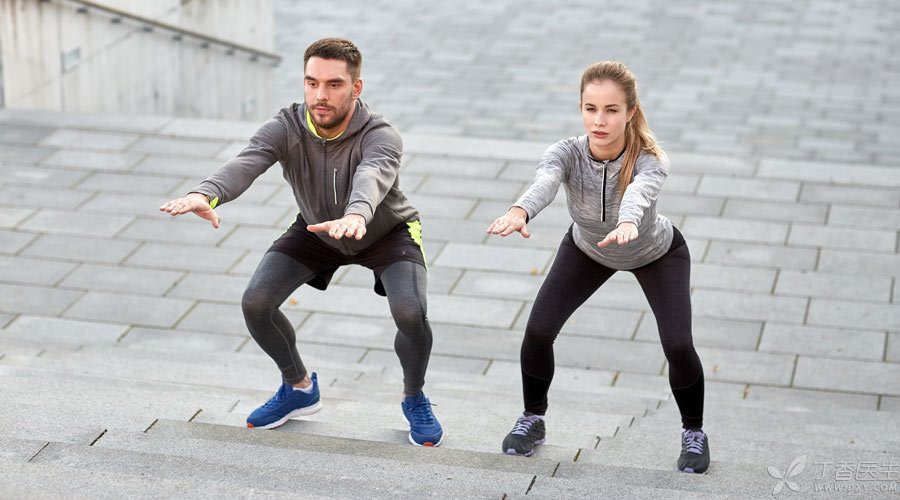
If there is no foundation, you can simply do squats on the flat ground: open your legs, keep your upper body upright, try to find the feeling of sitting back on your buttocks, keep balance and stability, and do not shake your joints left and right.
To do squats on the steps, one needs to pay more attention to the grasp of the body’s center of gravity and be careful to fall back.
If you increase the difficulty, you can try the action of [Bulgaria squatting with legs apart].
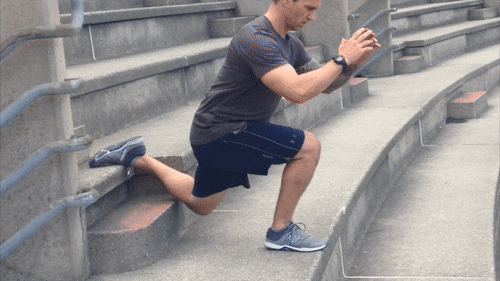
It is recognized as a big hip shaping killer, which can exercise leg strength and body coordination well, and is a classic of lower limb function training.
If you can’t do it at first, you can use the stair handrail or wall to help it.
Action 3: One leg goes up the steps to raise the leg.
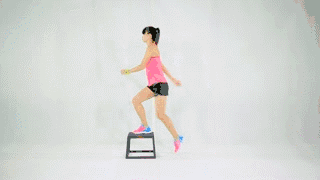
Using one high step (or two steps), on the basis of training gluteal muscle and thigh muscle group, the movements of [lifting heel] [lifting knee] are added, and the key point is still to maintain stability.
Action 4: Walk sideways
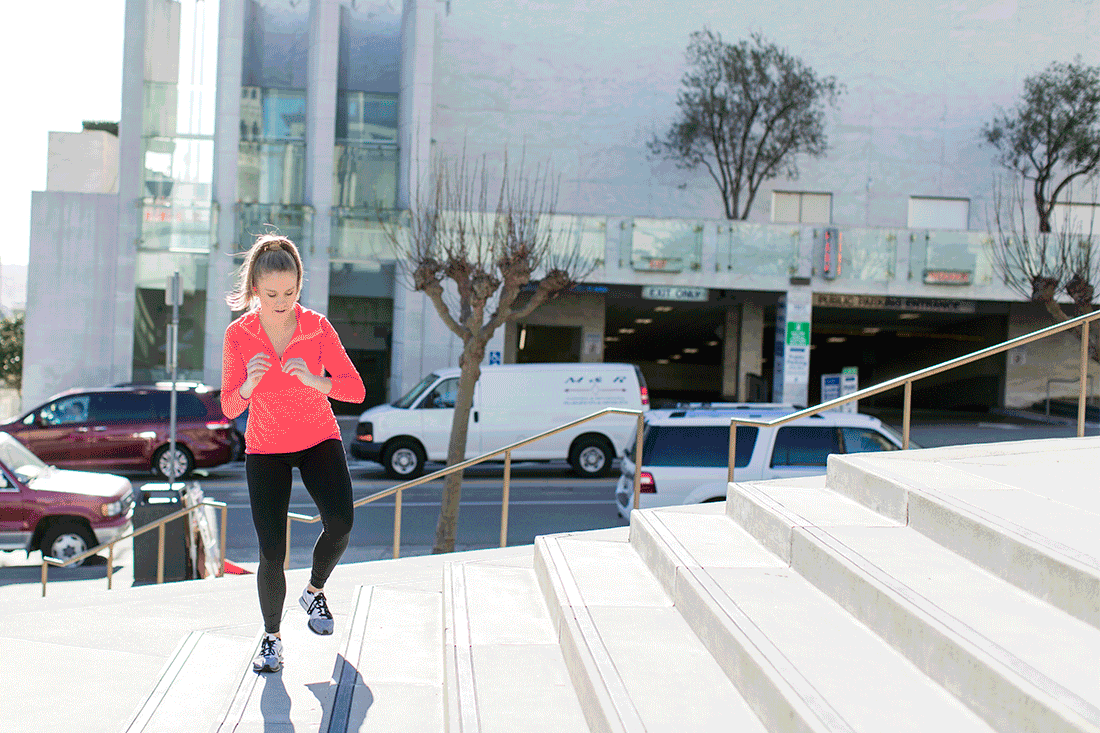
Walking sideways is more suitable for practicing on low stairs. It should also be noted that the upper body should be kept upright.
If you use a certain degree of [squatting posture] and knee bending, you can better exercise the gluteus medius and gluteus maximus.
Action 5: Bend over to climb the mountain
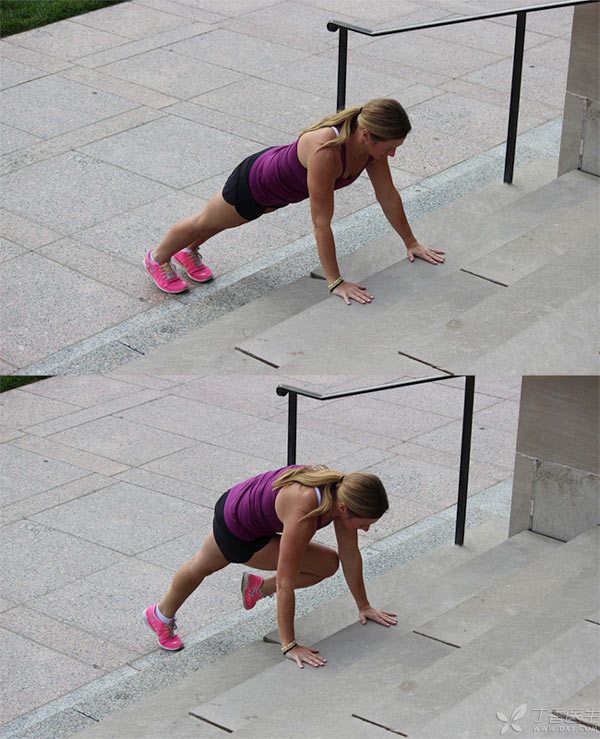
This is a highly recommended whole-body exercise, especially to stimulate core muscle groups.
The main points of the action are: the feet are naturally separated, the hands are supported under the shoulder joint, the back is kept straight, the abdomen is tightened, one knee is pulled to touch the elbow on the opposite side, and then the other side is alternately changed.
Action 6: Push-ups
Relatively speaking, push-ups are difficult.
When you can’t do a normal push-up, you can do [up-slant push-up] with the help of stairs, because the difficulty will decrease as the height of the steps increases.
You can also take [kneeling] push-ups with knees touching the ground.
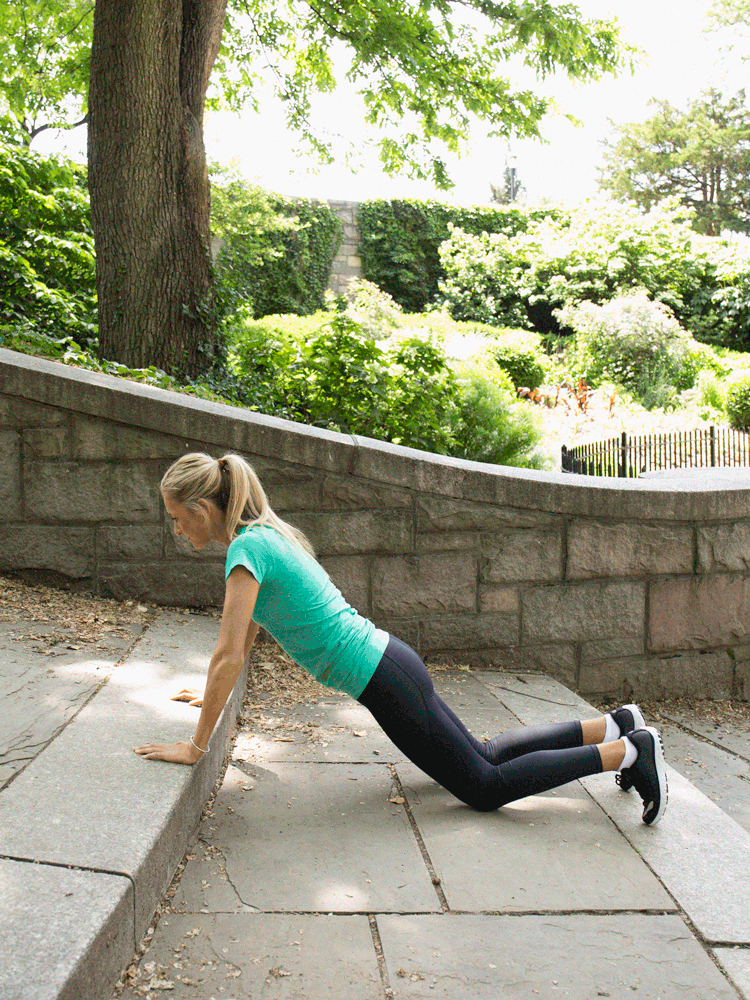
What if you can’t do it? You can also stand up, that is, stand up and do [push-ups on the wall].
If you feel relaxed doing normal push-ups, you can do [downward inclined push-ups] with the help of stairs (you can use chairs and beds in the room), which can exercise well to the upper chest.
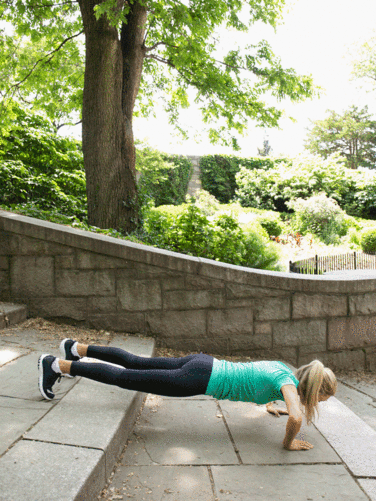
Action 7: Climb the stairs
Many people will question: Isn’t climbing stairs causing knee injury? Isn’t it not recommended by orthopaedic doctors? Indeed, compared with ordinary walking on flat ground, the knees have to bear several times the pressure of weight when going up and down the stairs.
But at the same time, climbing the stairs can improve the muscle strength around the knee joint, such as quadriceps femoris, thus increasing the support and protection for the knee.
As long as the amount and intensity of exercise are moderate and reasonable, the benefits always outweigh the disadvantages.
Only the following people, it is really best not to climb the stairs:
- Degenerative arthritis: The knee joint has been excessively worn, and continued high-load use will aggravate the symptoms. Elderly: The function of various parts of the body is deteriorating, which is not recommended for safety or practicality. Overweight: Severe obesity does double the burden on the knee.
Fast climbing stairs exercise, exercise intensity can reach twice as high as jogging, heart and lung exercise efficiency is very high.
After full warm-up activities, start with two steps at a time, run up the stairs with all your strength for 20-30 seconds, then slowly walk down the stairs, and then continue to run up with all your strength,… Repeat this for 20-30 minutes.
If you feel that your physical fitness is declining at the back, you can reduce your speed or change it to one step at a time.
However, the intensity of going down the stairs should be smaller. The high-intensity intermittent training matched up and down the stairs is a good form of exercise. If there is an elevator, climb to the top floor and then take the elevator downstairs, so as to reduce the impact and wear of the knee joint downstairs as much as possible.
Action 8: Staircase Frog Jump
As long as you have enough physical ability, you can also challenge [frog jumping], enhance your heart and lung ability and improve your explosive force.
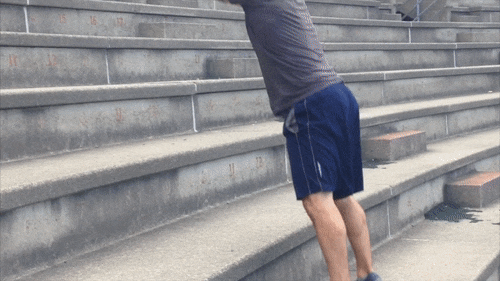
The two legs are naturally separated and take off from the squatting position. The arms, hips, knees and ankles exert force at the same time. When landing, they should be [gentle] so as to reduce the impact on the knee joint. The whole process must be coordinated and stable.
For ordinary stairs, you can take 2 steps at a time, rest for 1 minute, and then continue. When physical fitness drops, it can be changed to 1 step.
The above unarmed training movements focus on different parts and have more lower limb training. You can choose different movements to practice every day.
After practice, it is very important to remember to stretch.
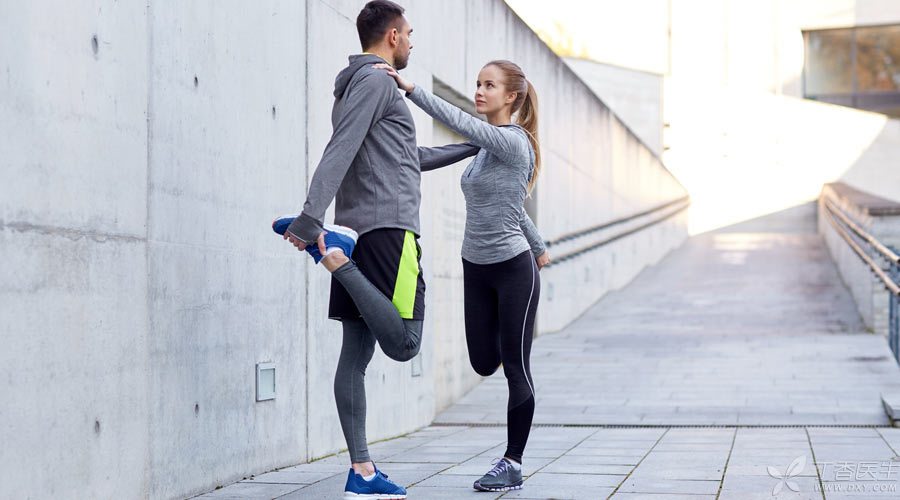
Action 9: Stretch
With the help of stairs, handrails or walls as auxiliary or fulcrum, many stretching actions can be completed.
Squatting against the wall is a classic action for knee rehabilitation.
Control your feet away from the wall, keep your thighs parallel to the ground, keep your back straight and completely close to the wall, keep your body at two [90 degree right angles] and sit still.
Try to keep it for more than 1 minute each time, 3 ~ 5 groups.
